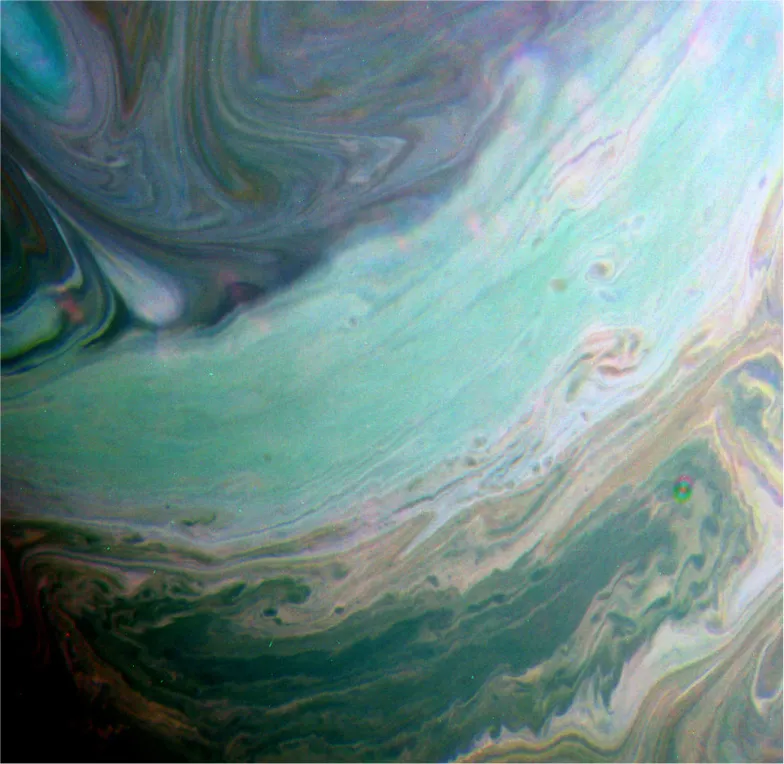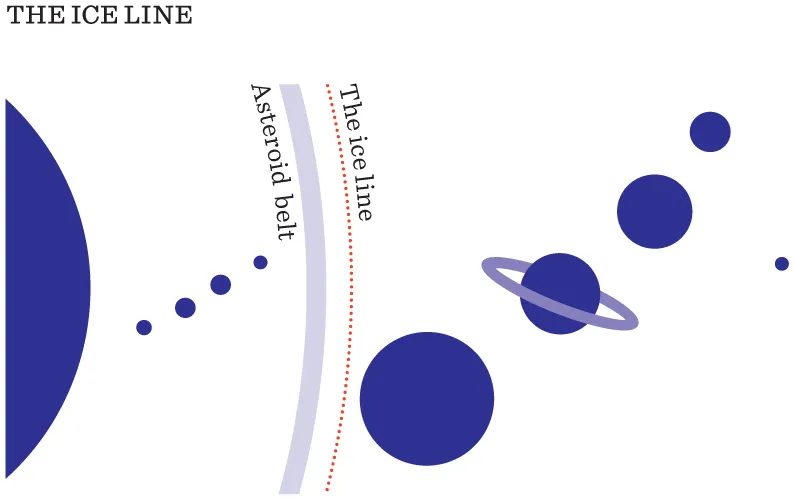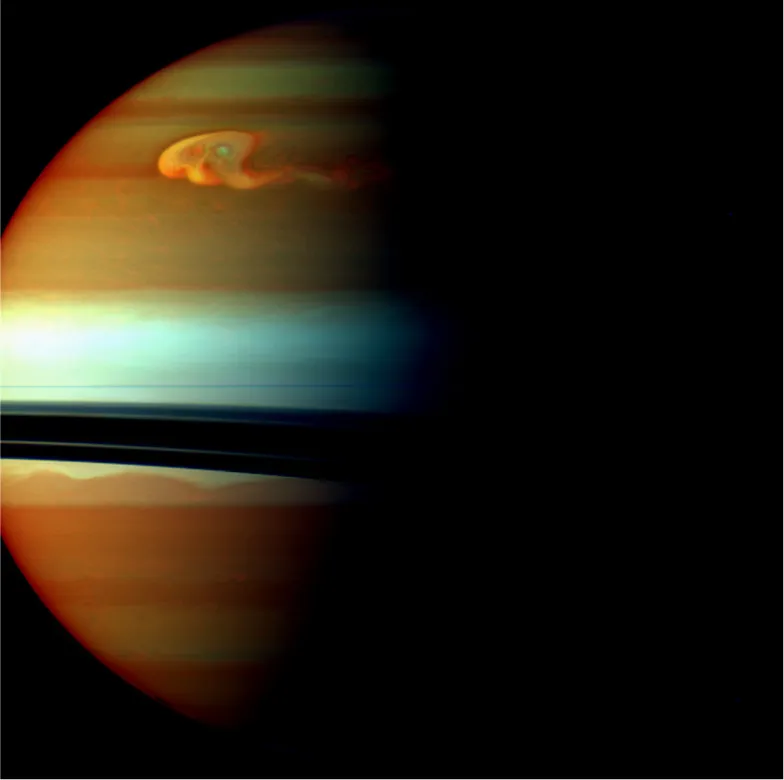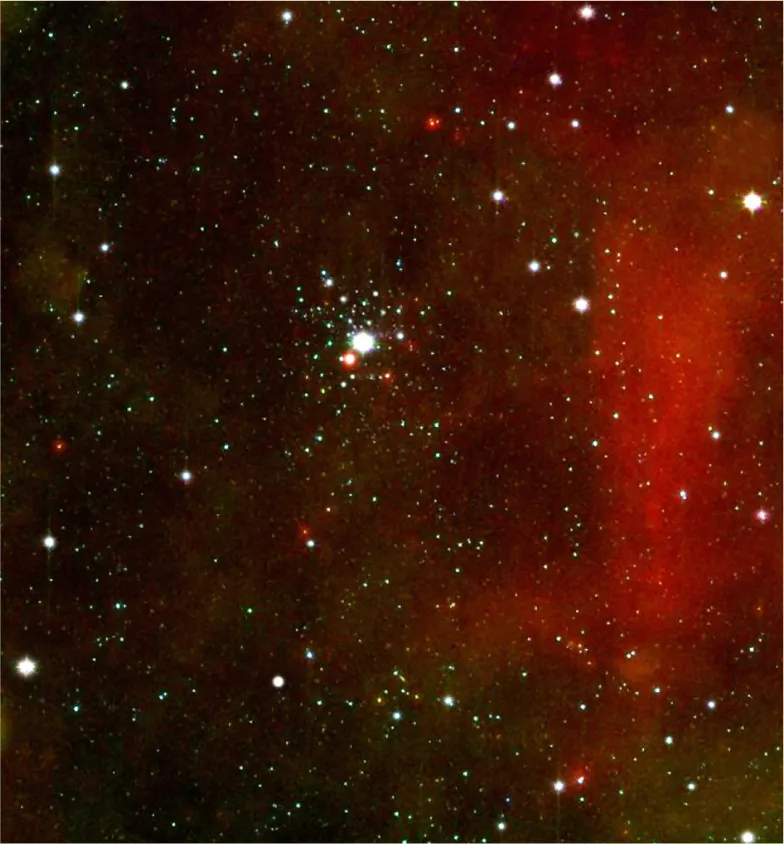
eBook - ePub
The Planets
Professor Brian Cox, Cohen
This is a test
Condividi libro
- English
- ePUB (disponibile sull'app)
- Disponibile su iOS e Android
eBook - ePub
The Planets
Professor Brian Cox, Cohen
Dettagli del libro
Anteprima del libro
Indice dei contenuti
Citazioni
Informazioni sul libro
Jupiter: The Ruthless One – Mars: The Doomed One – Sun: The Fiery One – Saturn: The Beautiful One – Pluto: The Mysterious One
Domande frequenti
Come faccio ad annullare l'abbonamento?
È semplicissimo: basta accedere alla sezione Account nelle Impostazioni e cliccare su "Annulla abbonamento". Dopo la cancellazione, l'abbonamento rimarrà attivo per il periodo rimanente già pagato. Per maggiori informazioni, clicca qui
È possibile scaricare libri? Se sì, come?
Al momento è possibile scaricare tramite l'app tutti i nostri libri ePub mobile-friendly. Anche la maggior parte dei nostri PDF è scaricabile e stiamo lavorando per rendere disponibile quanto prima il download di tutti gli altri file. Per maggiori informazioni, clicca qui
Che differenza c'è tra i piani?
Entrambi i piani ti danno accesso illimitato alla libreria e a tutte le funzionalità di Perlego. Le uniche differenze sono il prezzo e il periodo di abbonamento: con il piano annuale risparmierai circa il 30% rispetto a 12 rate con quello mensile.
Cos'è Perlego?
Perlego è un servizio di abbonamento a testi accademici, che ti permette di accedere a un'intera libreria online a un prezzo inferiore rispetto a quello che pagheresti per acquistare un singolo libro al mese. Con oltre 1 milione di testi suddivisi in più di 1.000 categorie, troverai sicuramente ciò che fa per te! Per maggiori informazioni, clicca qui.
Perlego supporta la sintesi vocale?
Cerca l'icona Sintesi vocale nel prossimo libro che leggerai per verificare se è possibile riprodurre l'audio. Questo strumento permette di leggere il testo a voce alta, evidenziandolo man mano che la lettura procede. Puoi aumentare o diminuire la velocità della sintesi vocale, oppure sospendere la riproduzione. Per maggiori informazioni, clicca qui.
The Planets è disponibile online in formato PDF/ePub?
Sì, puoi accedere a The Planets di Professor Brian Cox, Cohen in formato PDF e/o ePub, così come ad altri libri molto apprezzati nelle sezioni relative a Physical Sciences e Astronomy & Astrophysics. Scopri oltre 1 milione di libri disponibili nel nostro catalogo.
Informazioni
Argomento
Physical SciencesCategoria
Astronomy & AstrophysicsNo 4
SATURN

© Shutterstock

© NASA/JPL/Space Science Institute
Saturn sits stately in our Solar System, surrounded by its iconic icy rings.
CELESTIAL JEWEL
Saturn is a gas giant, alive with storms of unimaginable ferocity, a world of alien weather where diamonds rain down from the sky and bubbling vortexes whip around the planet so fast they catch up with their own tails. And glistening in the distant light of the Sun is a 500,000-mile ring of almost pure frozen water, broken into millions of individual pieces. This structure is unique in our Solar System, sculpted by the delicate hand of gravity. Yet for all of their iconic beauty, the rings are just a fleeting shadow, an echo of Saturn’s past and an ephemeral structure that has adorned the planet for a brief moment in its history and will soon disappear again.
At any one time, 10 million tonnes of diamond ‘hail’ are raining down upon Saturn’s surface.

© NASA/JPL-Caltech/Space Science Institute/Kevin M. Gill
The Cassini mission sent back revelatory images of the planet, such as this one, showing clouds in Saturn’s northern hemisphere.
Saturn is a place of many worlds, encircled by at least 62 moons. This menagerie of satellites boasts worlds of astonishing variety: Titan – bigger than the planet Mercury – is the only moon in the Solar System to have its own substantial atmosphere, while Mimas is the smallest body in the Solar System. Perhaps most astonishing of all, though, is Enceladus – an ice moon with an ocean of liquid water inside that seems to contain all the building blocks of life.
Composed of 96 per cent hydrogen and 3 per cent helium, Saturn has a diameter at its equator almost ten times the size of the Earth – at 120,536 kilometres. Its volume would hold 800 Earths. However, with its mass made up predominantly of gas, the planet’s density is remarkably low. As the only planet in the Solar System less dense than water, if you could find a bathtub big enough to hold it, Saturn would literally float in it.
Beneath the frosty minus 178 degrees Celsius cloud tops, the pressure rapidly increases under the huge weight of Saturn’s dense atmosphere. The hydrogen gas of the upper layers turns at first into liquid, and then, hundreds of kilometres further below the planet’s cloud tops, into slushy metallic oceans of hydrogen.
We can only make an educated guess about the structures that lie within Saturn’s unreachable core. With temperatures at its centre exceeding 11,000 degrees Celsius, Saturn generates far more heat from within itself than it receives from a sun that sits on average 1.4 billion kilometres away, meaning that it must be generating its own heat. With such extreme temperatures and pressures, the structural makeup of the planet is uncertain and hotly debated. According to planetary scientist and physicist Jonathan Lunine, ‘if you go down, down, down, through the hydrogen, through the helium rain, to this core of rocky and icy material, it’s not rock and ice. It’s some sort of atomic crystal where the elements of rocks and ice, the silicon, the oxygen, the magnesium are all together in a structure that doesn’t exist in the rocks on the Earth. Now in the case of Jupiter, it might actually be warm enough that the core is a liquid, that it’s molten. In the case of Saturn, it’s probably a solid core, but definitely an exotic one.’
Undoubtedly there is a dense core at the heart of Saturn, one that is almost certainly composed of iron-nickel alloy and rocky silicon-based compounds, but exactly how this material behaves at such extremes remains a mystery.
‘Scientists thought of the Saturn system as recording the history of the Solar System, but didn’t realise it would be a very active place. When we got there we found that it’s very dynamic, that the planet itself changes with the seasons.’
Bob Pappalardo, Cassini mission
Bob Pappalardo, Cassini mission
From its surface all the way down to its centre, Saturn is a world of mystery. This gas giant, along with its sister planet, Jupiter, is worlds apart in character from Mercury, Venus, Earth and Mars – the terrestrial planets of the inner Solar System. It is hard to imagine how they could all have been created from the same ingredients, the singular cloud of gas and dust that gave birth to every planet in our Solar System. But if we go back far enough in time, we begin to uncover a history with a surprisingly familiar origin. The beginning of Saturn’s story is far more recognisable than its present-day character would suggest, because at the heart of all of the ringed planet’s beauty lies a lost world: a primordial one that disappeared from view billions of years ago and yet was the seed for everything that Saturn was to become. Without this early world there would have been no gas giant, no rings of ice and no hope of an orbiting oasis of life in the far distant reaches of our Solar System.

© NASA/JPL-Caltech
This composite image shows Cassini in orbit around Saturn.

© HarperCollins
The ice line divides a solar system into two zones based on temperature; one warm enough for liquids, the other frozen solid.
The story of Saturn, like that of all the planets, began around 4.5 billion years ago. In the light of the awakening Sun, a vast cloud of gas and dust swirled around our newly formed star, and that protoplanetary disc of gas and dust clumped and coalesced until it slowly began to form into a collection of embryonic worlds that would go on to become the four rocky planets sitting closest to the Sun. Millions of kilometres further out, in the cold distant reaches of the Solar System, a similar story was playing out, but this tale of planetary formation would follow a very different path. That’s because Saturn was moulded beyond a boundary called the ice line (sometimes also called the snow line), which is a frontier that marks the divide between the terrestrial planets and the gas giants. Respective proximity to this line would lead the evolution of Saturn and that of its neighbouring planet, Jupiter, to play out very differently.
The ice line, as you might expect from the name, is a way of dividing a solar system into two broad zones based on temperature. Inside the ice line the strength of a star is strong enough to keep things pretty warm, but step onto the other side of the line and you have crossed a boundary where it becomes cold enough for volatile compounds like water, methane, ammonia and carbon dioxide to condense and freeze solid. (Each of these compounds does, of course, have its own precise ice line, due to the different specific freezing points of each individual compound, but beyond a certain point the boundary begins to incorporate the freezing points of a large number of compounds.)
Today the ice line is thought to be around 5 au – that’s around 750 million kilometres – from the Sun, which means it lies well beyond the asteroid belt, at a distance just before the orbit of Jupiter. But in the infant days of the Solar System that distance would have been much less. With a weak young Sun shrouded in an opaque cloud of dust and gas, the early ice line would have fallen about 2.7 au from the Sun, smack bang in the middle of where we find the asteroid belt today. We know this because we have been able to explore the makeup of the asteroids on either side of this line. Beyond the 2.7 au line, we’ve discovered the asteroids to be icy objects with large amounts of water ice locked away within them, while on the inside of this line we find a very different class of asteroid, dry and largely devoid of water. It seems these bodies formed in a region of space that was simply too warm to allow substantial amounts of ice to exist.
Why does the ice line matter in the story of Saturn’s evolution? In the early Solar System, as the protoplanetary disc swirled around the young Sun, the ice line not only defined an important boundary in terms of temperature, but it also created a dramatic difference in the abundance of material available to build a planet on either side of the line. Beyond the ice line the lower temperatures meant that all of those frozen volatile compounds were swirling around in the cloud of gas as solid grains, building blocks that provided vast amounts of additional material to feed into the process of planetary accretion, and the impact of this simple physical difference was profound. On our side of the line we find only rocky planets like Earth, Venus and Mars, while on the other side of the line there is not a single planet that we recognise as terrestrial, just the gas giants of Saturn and Jupiter and the ice giants of Uranus and Neptune beyond. To understand the reason for this stark delineation we need to look back to a critical time in Saturn’s history, to the moment when the paths of the planets either side of this ice line began to diverge.

© NASA/JPL-Caltech
The origin of Saturn lies in the accumulation of rock and ice to form one of the biggest worlds in the Solar System.

© NASA/JPL-Caltech/Space Science Institute
Saturn’s atmosphere; a storm is brewing in the north of the planet, with high clouds and haze beneath it, coloured blue and white. The rings cast a thick shadow.

© NASA/JPL-Caltech/Harvard-Smithsonian CfA
Studying star clusters such as this one, NGC 2362, has helped scientists to understand how gas giants like Saturn form so rapidly.
Saturn began its life not as a beautiful jewel but as a tiny, ugly, ragged world. Just like its terrestrial cousins, the origins of this giant gas planet began with the clumping together of tiny specks of gas and dust that slowly grew into bigger and bigger clusters. As this embryonic new world tumbled wildly through space, days would have lasted minutes as the distant Sun lit its twisted surface, rising and falling in chaotic rhythm. Eventually, as it grew, this ragged rock began to transform itself, taking the new shape of a spherical world as it went from planetes...